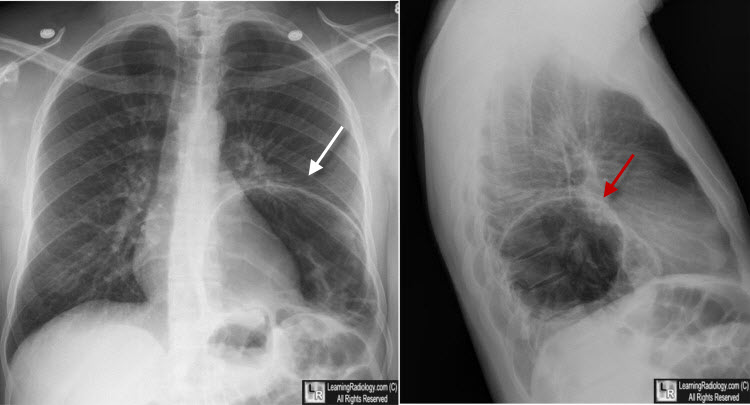|
|
Morgagni and Bochdalek Hernia
Morgagni Hernia
- Anterior – Morgagni
- Anteromedial parasternal defect (Space of Larrey)
- Maldevelopment of septum transversum
- Tends to occur in overweight, middle-aged, women
- Right > left (heart protects)
- Usually not large
- Usually unilateral
- Associated with
- Pericardial defects
- Omental fat in pericardial space
Bochdalek Hernia
- More common
- Occurs through old pleuroperitoneal canals
- Just lateral to the spine on either side
- More frequent on left side
- Possibly due to “protection” of right-side by liver
- Hernia may contain intestine, stomach, spleen, liver or omentum
- If hernia occurs on right
- Intestine and liver or only liver may herniate
- If the defect is large, newborns usually present with
- Severe respiratory distress
- Cyanosis
- Scaphoid abdomen
- Entire diaphragm is almost never absent
- Some part of diaphragm is usually found at surgery, even if defect is very large
- Hypoplasia of ipsilateral lung occurs from mass effect of bowel
- Most often these are isolated congenital abnormalities
- But they can have
- Congenital Heart Disease
- 13 ribs
- Malrotation of GI tract frequently present
- Possibly due to “protection” of right-side by liver
- Hernia may contain intestine, stomach, spleen, liver or omentum
- If hernia occurs on right
- Intestine and liver or only liver may herniate
- If the defect is large, newborns usually present with
- Severe respiratory distress
- Cyanosis
- Scaphoid abdomen
- Entire diaphragm is almost never absent
- Some part of diaphragm is usually found at surgery, even if defect is very large
- Hypoplasia of ipsilateral lung occurs from mass effect of bowel
- Most often these are isolated congenital abnormalities
- But they can have
- Congenital Heart Disease
- 13 ribs
- Malrotation of GI tract frequently present

Bochdalek Hernia. Frontal view of the chest shows a large air-containing and walled structure in the region of the left lower lobe (white arrow). It is originating from below the diaphragm. The air-containing structure is seen posteriorly on the lateral view (red arrow).
|
|
|